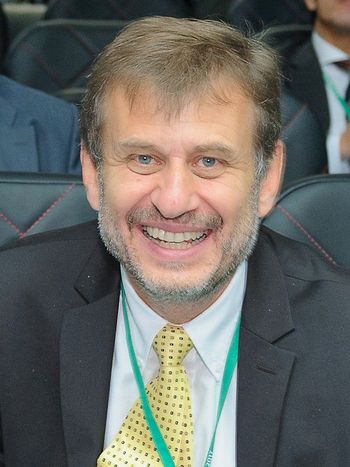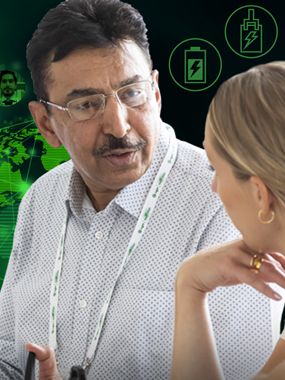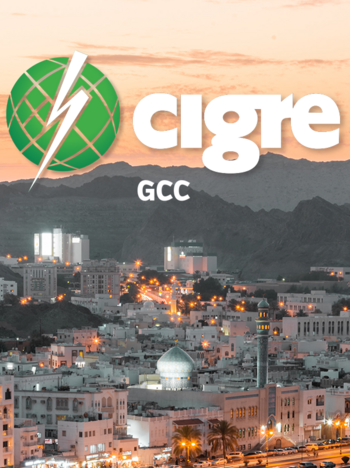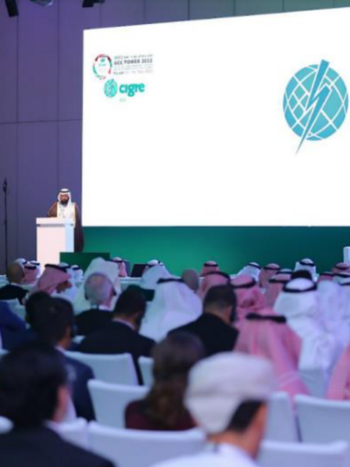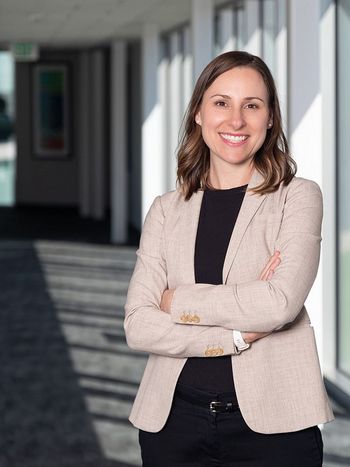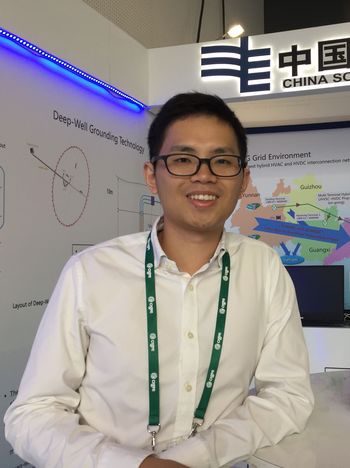2022 outgoing Study Committee Chairs
We asked our outgoing Study Committee Chairs to share their reflection about their experience within the Study Committees and give us their expections for the future. Here's their feedback.
Study Committee B1 outgoing Chair: Marco Marelli
It takes a minute to have a crush on someone, an hour to like someone, and a day to love someone... but it takes a lifetime to forget someone” (Kahlil Gibran). My experience as SC B1 Chair has been plenty of these “someones” and I’m grateful to them
Reflections as SC B1 Chair (2016-2022) on six years of B1 achievements
The past six years have been shaped by the pandemic that accelerated many changes, including the way of working within CIGRE. Most of attention for B1 has focused on the sharing of lessons learnt across working groups so to keep a good pace for ongoing activities and on the ability to organize regular well-participated webinars. The return to in-presence events, meetings, tutorials, will benefit from those positive experiences.
The increased complexity of systems, the larger interaction across disciplines and the guidance from CIGRE TC, favoured an increased cooperation with different organizations and with other Study Committees: B1 is currently active in 15 joint working bodies, five time more than in 2016.
CIGRE have a variety of stakholders and there are different expectations in terms of “produced documents”. B1 worked to diversify the publications, complementing the traditional Technical Brochures (24 in 6 years) with Green Books (“Accessories for HV and EHV Extruded Cables” and one chapter in “Electricity Supply Systems of the Future”), reference papers, short reports, newsletters and the already mentioned webinars.
The big push to energy transition is actracting people in the electrical sector, particularly “young experts”. This resulted in currently more than 80 CIGRE Next Generation Network representatives in B1 working bodies: more than tripled in six years.
SC B1 published every 10 years operational statistics about underground and submarine cables. This is not anymore compatible with needs of planners and users, that require more frequent and up-to-date information for their decision-making processes. The Study Committee worked to be able to produce statistics every two years.
All achievements are the consequence of the long-term vision of past B1 Chairs and are the results of passionate work done by a large community of people who made easy to chair the SC.
Future challenges and expectations for SC B1
The best and more important asset of CIGRE and of SC B1 are people. B1 needs to maintain the spirit and the willingness to contribute of its many experts and to give value to the many who are “both leaders and doers”, but also to attract and include more people from different countries, particularly from outside Europe.
The attenton to the quality of produced documents is key to comply with stakeholders needs and requests. This includes of course the avoidance of any explicit and hidden commercialism but shall extend to the attention to correctness and completeness of the wording of any technical document. This need is coming from the increased variety of users of CIGRE documents that include newcomers in the electric sector and more non-technical people e.g. insurers and lawyers interested in technical documents, as CIGRE documents are recognized to be pillars in enabling a solid approach to new technologies.
Another aspect still to improve is the time-to-market of Technical Brochures: the excellence in contents of CIGRE B1 documents shall be accompanied with a shorter time from when a certain request is considered to when the relevant outcome is published. This may require some imagination about the way of working in WGs to get faster conclusions and also some innovative idea e.g. to produce multiple, shorter, partial, self-standing documents to be made available as soon as ready and to be then combined in a single document at their completion.
The increased complexity of systems and sub-systems and the larger interaction across disciplines require also the ability to work on topics that are non-traditional for B1. People with different type of expertise may be asked to contribute in WGs, with a similar process that helped to expand the work of B1 to lower voltage levels and to deliver documents that go beyond the traditional transmission systems. Also the Preferential Subjects for 2024 are well capturing the possible and probable new technical aspects to be considered in the years to come.
Study Committee B2 outgoing Chair: Herbert Lugschitz
It was a challenging but wonderful experience to be in the center of the world of power transmission, to coordinate 24 Working Groups with about 600 members. Many thanks for the support from all Conveners and Members of WGs, AGs and from my Secretary Wolfgang Troppauer
Outgoing Chair Experience and Main CIGRE roles
B2 published various publications in the last six years:
- 22 Technical Brochures (two with other SCs)
- Two B2 Green books: “Modelling of vibrations of overhead lines conductors” and “Techniques for Protecting Overhead Lines in Winter Conditions”, and contributed to the GB “Electricity Supply Systems of the Future”
B2 organized and supported Symposia, Colloquia, Conferences
- “Experiencing the Future Power System….TODAY” in Dublin/Ireland 2017
- “Challenges of The Future Power Grids” in Aalborg/DK 2019
- “EHV and UHV (AC and DC)” in Hakodate/Japan 2019
- “Latest Trends & Innovations in OHL….” in Delhi/India 2019
- “Reshaping the Electric Power System Infrastructure” in Ljubljana/Slovenia 2021.
The SC established 19 new Working Groups and held 23 Tutorials and Webinars on different occasions.
Experience Summary
Many countries all over the world have an increasing demand for new distribution and transmission lines. This involves the replacement of existing lines, the installation of new lines, and the increase of transport capacity on existing lines. For high voltage, extra high voltage and ultra-high voltage, the big majority of new lines will be overhead and will especially remain the most used technique to transport electric energy over long distances with high capacity.
Long term reliability, long service life, cost efficiency and consideration of environmental aspects are required. Modern approaches, materials, methods and design help to fulfill these requirements.
The work of B2 has focused on these aspects over the last years and will continue to do so. The energy transition needs solutions and suggestions for the transport of electric energy. B2, together with all other SCs of CIGRE, is at the forefront of this development.
Study Committee C4 outgoing Chair: Zia Emin
Great pleasure to have served CIGRE and power system community in SC chair capacity. Thank you to all those who have helped me during my tenure as chair of SC C4
Reflections of SC C4 (2016-2022)
- Formed 32 SC C4 led WGs/JWGs (two with IEEE) and 9 JWGs led by other SCs
- Disbanded 23 WGs/JWGs
- Published 23 Technical Brochures
- Led the TOC for the 2019 Aalborg Symposium
- Supported 2017 Dublin and 2022 Kyoto Symposiums
- Organised 2017 Ljubljana and 2019 Delft international colloquium on Lightning & Power Systems
- Supported CIGRE-IEC Colloquium on EHV & UHV (AC&DC)
- Delivered 14 tutorials
- Delivered 8 webinars
- Organised 4 workshops
- Published 4 reference papers
- One chapter in the Green Book on “Electricity Supply Systems of the Future”.
- Initiated one SC C4 Green Book on “Power System Dynamics”
Outgoing Chair Future Expectations
Increased emphasis on inverter-based resources and its integration into power networks is the main impact. This brings new technical challenges, and these have been at the forefront of SC C4
- System strength implication,
- System stability implication (voltage, frequency etc)
- Interaction issues associated with controls (both subsynchronous and super-synchronous)
- Power quality implications
- EMI and EMC aspects (EVs, wind turbines etc)
Classic analytical areas expanding to cover new inverter-based resources such as:
- Fault contribution modelling
- Insulation coordination
- Modification or expansion of analytical tools for simulation purposes
Lastly, expect to see more sector coupling initiatives driven by energy transition. Electricity will probably be at the centre of this and hence CIGRE should be geared up to facilitate collaboration with non-power network establishment (i.e. those outside of CIRED/IEEE/IEC etc).
Study Committee C6 outgoing Chair: Christine Schwaegerl
It was a great pleasure to have served CIGRE community as SC C6 chair for the past six years. I really enjoyed the wonderful experience to push forward CIGRE’s technical activities, and all the memorable moments and interesting discussions. Thank you to all who have supported the numerous activities of SC C6!
Outgoing Chair Experience and Main CIGRE roles (2016-2022)
Supported by all SC C6 members a number of activities took place within the past 6 years, in particular:
- Established 16 WGs/JWGs led SC C6 led and participated in 4 JWGs led by other SCs
- Published 14 Technical Brochures
- Led the TOC for the 2019 Chengdu Symposium and the 2022 Kyoto Symposium
- Supported 2017 Dublin, 2019 Aalborg and 2021 Lubljana Symposia
- Supported various national colloquia and local events
- Delivered numerous tutorials, webinars and workshops
- Published one chapter in the Green Book on “Electricity Supply Systems of the Future”.
- Edited the SC C6 Green Book on “Distributed Energy Resources in Active Distribution Systems” (still ongoing)
Personal Reflections of outgoing chair about future challenges
Electric power systems are rapidly evolving due to increased penetration of distributed energy resources (DER) deployed in distribution systems. DER include generation from renewable energy resources (solar and wind), in addition to conventional distributed generation, electric energy storage systems, mostly connected at the distribution level, and demand response, in the form of integration and management of demand at the distribution level. The growing addition of generation at the distribution level may gradually displace central power generation and require new approaches to managing not only distribution but also transmission systems.
Thus, focus of SC C6 is on innovative solutions for DER and distribution technology deployment, new approaches to configure, plan and operate new and reinforced distribution systems for enhanced reliability and resilience, as well as rural electrification, islanded power systems and individual customer off-grid systems and solutions.
There is a still increasing importance of the topics covered by SC C6 for a future affordable, reliable, secure, and sustainable electricity supply. Due to rapid developments in technology, as well as in legal and regulatory environments, cigre’s activities in these areas are increasingly important to exchange knowledge and share experiences all over the world.
Study Committee D1 outgoing Chair: Ralf Pietsch
It was a great pleasure to work as chair of D1 with CIGRE itself, with all Technical Council members, and all the members of SC D1. Thanks to all of them, they supported me to run D1 successfully and to address important topics. I learnt technically a lot but also had the great opportunity to meet wonderful people worldwide
Outgoing Chair Experience and Main CIGRE roles (2016-2022)
Together with the active support of all members of SC D1 the following activities, publications, tutorials, CIGRE Sessions, Colloquia and Symposia were achieved or supported.
Some key figures:
- About 20 Technical Brochures were published
- SC D1 was able to found 12 new Working Groups
- 15 tutorials were given at different events
- The chair contributed to the Green Book on “Electricity Supply Systems of the Future” with one chapter
- SC D1 works closely together with A1, B1, and founded JWG and published technical brochure with them
SC D1 works at and supported the following events successfully:
- CIGRE SC A3/B4/D1 Colloquium in Winnipeg, Canada, October 2017
- CIGRE-IEC Conference on EHV and UHV (AC & DC), Hakodate, Japan, April 2019
- CIGRE SC A2/B4/D1 Colloquium in New Delhi, India, November 2019
- 41. CIGRE Symposium in Ljubljana, Slovenia in 2021
Besides the activities within CIGRE itself SC D1 has strong connections to IEC and other bodies.
Personal Reflections of outgoing chair about future challenges
- Materials, testing & diagnostics will play an ongoing and important role in the future too. The strengthening of DC grids and the development of the needed technologies in the EHV and UHV impose new questions and challenges for SC D1.
- SC D1 may further increase the work and exchange with other SC to deliver adequate solutions.
- Like other SC, D1 must further attract younger people to handle the above-mentioned topics and tasks.
- A good tool to achieve this goal might be the further extension and use of tutorials and webinars.
- To handle this successfully, it is important to convince companies, universities etc. that the engagement in CIGRE is important, fruitful (technically and personally) to realize the so-called energy transition.
Study Committee D2 outgoing Chair: Olga Sinenko
CIGRE gives the unique opportunity for international professional cooperation. Development of the electric power industry is impossible without it. The time during which I had the honor of being SC D2 Chair allowed me to apply all my passion for IT and fruitful international cooperation, to unite the work of highly qualified specialists from different countries worldwide in Working Groups and at International events. I am proud that the results of our inspired collaborative work are in demand all over the world.
Outgoing Chair Experience and Main CIGRE roles 2018-2022
With the ongoing support of all D2 members, SAG experts and AG, WG convenors the following results were achieved:
- 8 Technical Brochures were published
- 14 new Working Groups were launched
- Numerous tutorials and workshops were delivered at different events
- Web tutorials for the National Committee`s and Regional CIGRE Conferences (in Africa, India, Brasil, SEERC) were launched
- To disseminate D2 knowledge and work results and support African electricity system developments SC D2 Africa Task Force was set up which participated in the TC Africa TF
- Contribution to the Green Book “Electricity Supply Systems of the Future” with the chapter “Information Systems and Telecommunications”
- Cooperation with other CIGRE Study Committees especially B3, B5, C2, C6 remained essential for joint research using the mechanisms of Joint Working Groups as well as joint events: Symposiums, panels, tutorials
- SC D2 Held D2 Colloquium 2019 in Helsinki, participated in the 2019 Chengdu Symposium, led the TOC for the 2022 Kyoto Symposium
- Strengthened cooperation with international organizations and standardization bodies: IEC, IEEE
Experience Summary
The role of Information Systems and Telecommunication, so rapidly growing nowadays, can hardly be exaggerated. Information technologies support all spheres of human activity, including all the branches of electric power industry. One of CIGRE slogans — “for sustainable energy” — is based on the most progressive achievements in the field of automated control systems development, Big Data, Cloud Computing Architecture, Internet of things (IoT), Blockchain and Cybersecurity.
SC D2 studying and considering the evolution of information and telecommunication technologies copes with traditional and new requirements driven by the digital transformation in power industry including extension of Distributed Energy Resources.
To address the new challenges SC D2 Strategic Plan 2019 - 2025 has been updated with:
- SC D2 Customers expansion – Industrial Product Manufacturers, Telco Operators, Energy Regulators, Certification Entities were added.
- Extending of “Cyber Security” Technical direction - Cyber security challenges related to new devices, technologies and DER interconnection and the additional data exchanges between Transmission System Operators, Distribution System Operators and Significant Grid Users, as required by the flexibility management of future grids were added.
New technologies underlay the interconnection of end-to-end supply chain management that must be addressed by Electric Power Utilities to ensure they are competitive. A major consequence of this interconnected world is the expanded threat landscape, as well as the need to assure business continuity and disaster recovery. To meet these challenges, D2 working groups should think of new solutions and methodologies – in summary, they should address the question “what if?”
